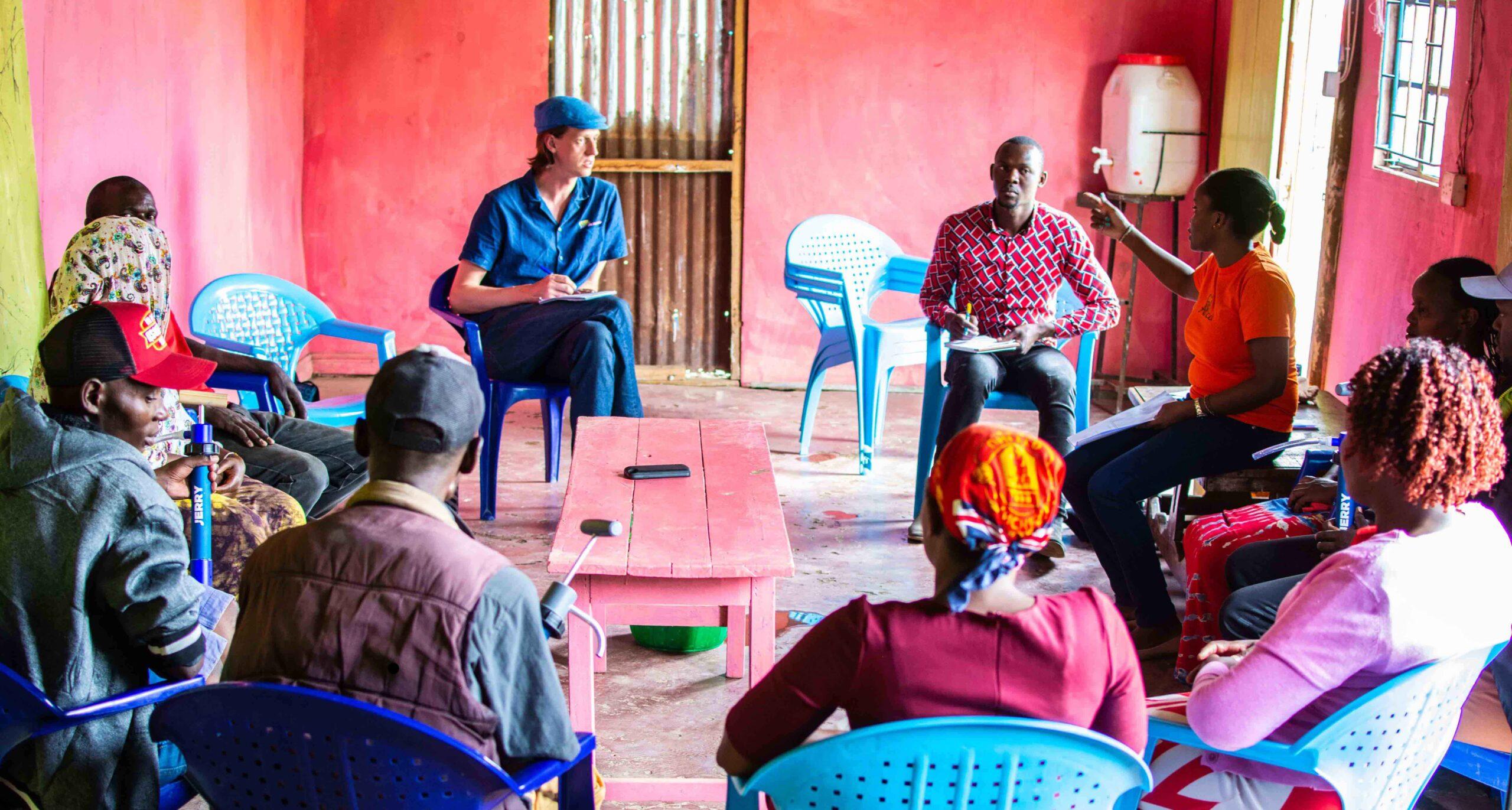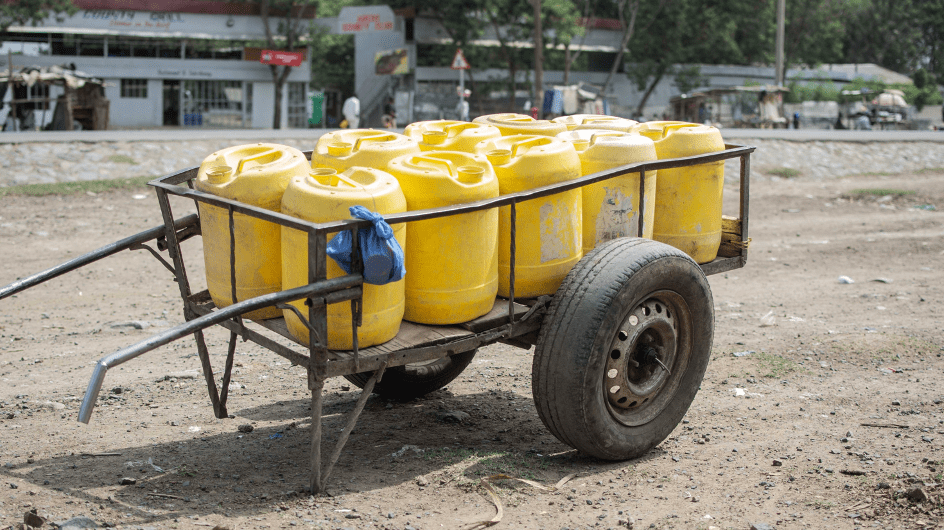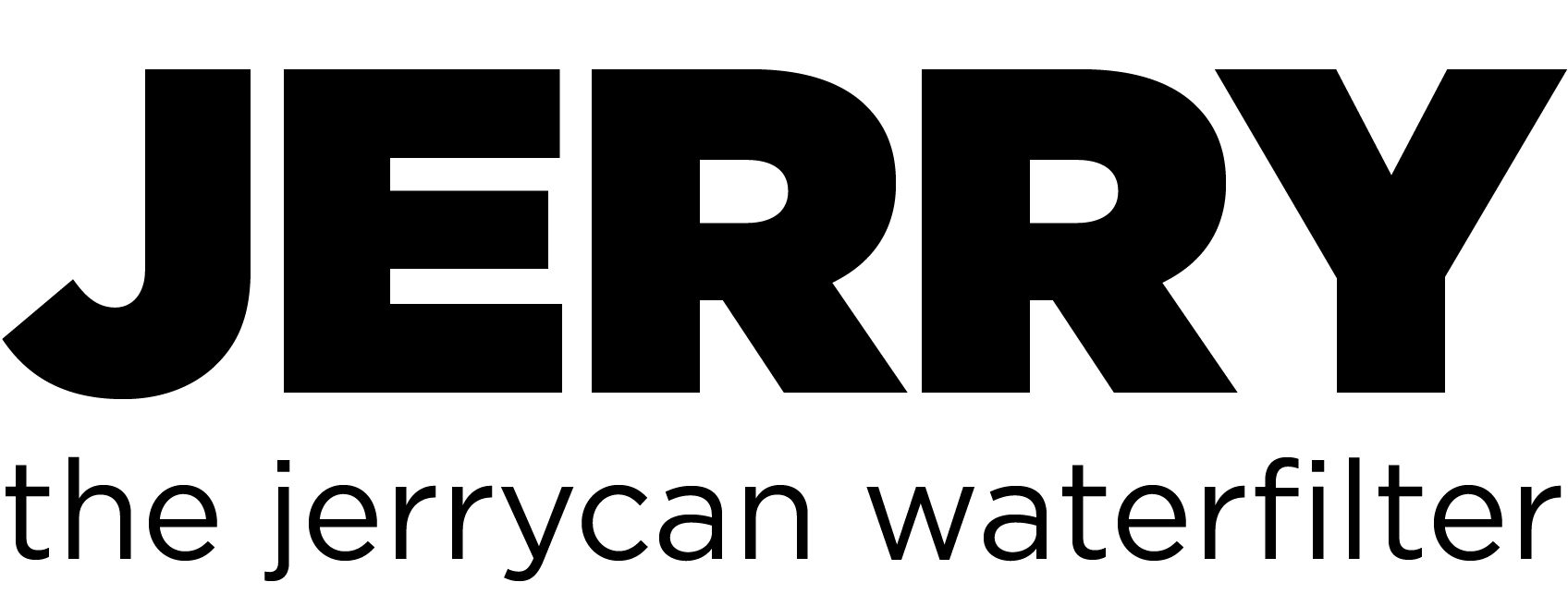Open Source

We believe that sharing information and knowledge is crucial in the water sector as this will lead to more equitable access to water resources. Therefore, we publish our most important findings, available for anyone to access. By doing so, we intend to improve information and data sharing within the water sector, ultimately to provide safe drinking water for the many as effectively as possible.
Our open-source project is an ongoing process. Please be advised that our research results may not be representable for the water sector as a whole or for different locations, as these reflect the results of our constrained research activities in specific areas in a certain time (2021-2022). However, we believe that our lessons learned are a good starting point for further research to build upon. If you have any comments or feedback, would like to be involved or would like to know more details such as the raw data; please get in touch with us at opensource@jerrycanfilter.com
Our guiding principles
The ultimate goal of our work with JERRY is to empower people who need it most with clean drinking water through bringing JERRY to market successfully in a locally embedded enterprise. To maximize the impact of JERRY, we adopt the ‘social enterprise’ approach of selling JERRY to our customers, rather than donating. It has been proven by peer-reviewed research that households use a water filter more continuously once they have bought it since this increases their valuation of the product. In addition, the decreased dependence on subsidies allows for a more scalable and long-term business strategy that can ultimately give more people access to clean water. However, establishing a social enterprise requires striking a delicate balance between impact and business case (e.g. because lower-income clients may benefit more from JERRY but also have a lower ability to pay). For this balancing act, we have always tried to take a pragmatic approach while ensuring our impact.
In addition, a brief word about our product principles. We believe that a water filter should be simple to operate and maintain correctly and consistently with absolutely minimal training or instruction, regardless of age or education level. Such a water filter should remove all types of pathogens, including viruses, treating water at the point-of-use to ensure safe and clean drinking water. Our estimated target retail price of JERRY of USD 30 can only be reached with a high production volume. A sound scaling strategy is therefore key for success. As such, JERRY is designed to be attractive to a large set of potential customers across different countries and different settings.
Overview of activities
Over the past three years, we have extensively researched the technical and financial feasibility of the jerrycan water filter using a variety of data-driven research methods, as described in the table below. We carried out our research activities with a number of partners who were indispensable in the process. Our most relevant partners include Aqua for All, VOx Impuls Foundation, Bopinc, Delft University of Technology, Oxfam, Cesvi, Humanitarian Innovation Fund (HIF) and the University of Applied Sciences and Arts Northwestern Switzerland (FHNW).
We tested different versions of JERRY with 500+ households of diverse income classes in 5 countries across 3 continents. In addition, we had countless meetings with industry experts, startup coaches, NGOs, distributors, manufacturers, investors, end-users, people we met on the street or in the back of a taxi and many others. These insights are based on our experience, beliefs and perspective.
Type of activity | Country | Location | Timeframe | Respondents (#) | Partner organization |
|---|---|---|---|---|---|
Focus Group Discussion | Iraq | Urban, rural | 1 day | 2 x 15 | Oxfam Iraq, FHNW, HIF |
Product Trials | Iraq | Urban, rural | 6 months | 100 | Oxfam Iraq, FHNW, HIF |
Focus Group Discussion | Gaza | Urban, rural | 1 day | 2 x 15 | Cesvi Gaza, FHNW, HIF |
Product Trials | Gaza | Urban | 6 months | 30 | Cesvi Gaza, FHNW, HIF |
Product Trials | Ethiopia | Urban | 1 week | 16 | Aqua4All, Bopinc |
Product Trials | Kenya | Urban, rural | 2 weeks | 40 | Aqua4All, Bopinc |
Survey | Kenya | Urban, rural | 1 day | 224 | Aqua4All, Bopinc |
Focus Group Discussion | Kenya | Urban, rural | 1 day | 2 x 10 | Aqua4All, Bopinc |
Sales Pilot | Kenya | Urban, rural | 1 week | 233 | Aqua4All, Bopinc |
Product Trials | Kenya | Rural | 1 month | 18 | AquaClara, VOx Impuls Foundation |
Six Main Learnings
1. Water issues differ across locations
Different sources, different problems
Households fetch water from a wide variety of sources, including household and community taps, rivers and lakes, wells, boreholes, rainwater, water ATMs, and bottled and sachet water. Respondents experience problems relating to both quantity and quality of drinking water albeit of various kinds. A PATH study (2010) indicates that tap water is the most common source in urban areas and in some rural areas. The piped water supply is often intermittent, and its safety cannot be guaranteed due to leaks in the system. Each water source poses its own challenges, including salinity, turbidity, fluoride, pathogens, poor smell and taste. During our pilots, we have come across all of the above issues. The issues may even differ wildly in the same neighborhood, as water may be fetched from various sources, as illustrated in the pie charts below.
Chart by Visualizer
Chart by Visualizer
Chart by Visualizer
Survey results among 224 respondents in Nairobi and Kisii area (Kenya,2022).
Understanding local issues is key
Most household water filters focus solely on removing pathogens and turbidity, which is not a viable solution when other pollutants such as salts or fluoride are present in the water source. For example, during the household trials we conducted in Rongai (Kenya), we found that households use slightly salty water, which remains salty after filtration. These participants were not interested in purchasing a water filter as it did not improve the saline taste of their drinking water. Therefore, it is important to map the local water issues before offering a solution to households, in order to find out whether the product is actually solving the issues these communities experience. This makes selection of the location for market entry and expansion of the utmost importance.
Chart by Visualizer
Chart by Visualizer
Survey results among 224 respondents in Nairobi and Kisii area (Kenya,2022).
2. Water filter market in its infancy
Household water filters not well known
Few households we visited in Ethiopia, Kenya and Gaza, ranging from low income consumers to (lower) middle income consumers, know about the existence of household water filters (HWTS). Furthermore, it has proven to be challenging to find points of sale for water filters in all of the above countries. For example, we could not find a store that sells household water filters during our 5–day visit in Nairobi. As such, active marketing and product promotion is required in the first phase (1 – 5 years), to convince households of the merits of filtering their drinking water.
Furthermore, a PATH study (2010) indicates that knowledge of the link between water quality and waterborne disease often does not translate into home water treatment. Common perceptions contribute to the belief that it is not necessary to treat water before consuming it. Many people think that (1) water is safe to drink if it looks clean and clear. Consequently, they only feel a need to treat turbid water. (2) Piped water, sachet water, and bottled water are safe. (3) Local water sources must be safe because they have been used for generations. As a result, most households do not consider treating water a priority and do it inconsistently, if at all. Public awareness of the health benefits of safe water varies across and within countries, depending on the extent to which governments, donors, and NGOs have communicated about these issues.
Active promotion and door-to-door sales required
Research shows that a large percentage of low income customers make a purchasing decision based on what their neighbors and relatives recommend to them: 92% for Solar Home Systems, 60% for home improvement packages, 60% for improved cook stoves and 49% for irrigation pumps (Hystra, 2013). The water filters that are for sale locally, are mostly sold by sales agents or NGOs who go door-to-door, such as Aqua Clara Kenya. It takes a long time to gain the trust of individuals and convince people that our product is advantageous for their situation. Trust in a solution is key in market activation and sales. We encountered different ways to build trust among clients, ranging from a priest blessing a well to Community Health Volunteers promoting a water filter. We are convinced that all ways to build trust are based on being close to your customers (e.g. within 30 kilometers) and need to develop over time (e.g. at least 5 years). Such a model takes patience and perseverance before sales start to trickle. During our interviews, households often mentioned that a nearby JERRY dealer would be convenient for replacement components or any broken part. Several households suggested that the filter should be available in supermarkets for ease of access.
3. Purchasing power is low
Low willingness to pay
Whereas approximately 80% of households we visited across rural low income, peri-urban low income and urban middle income households indicate that they would be interested in purchasing a water filter, the willingness to pay is low. We found out that the average willingness to pay for our water filter (with expected lifetime of 3 years for one household) is between USD 14 – USD 19 in Kenya, between USD 7 – USD 15 in Ethiopia and less than 1 USD in Gaza. Further research (Blum, 2014) supports that demand and willingness to pay remains low, despite increasing availability of household water treatment products.
What piqued our interest is that although this willingness to pay was relatively low, the majority of the participants of the survey agreed that JERRY can save a lot of time and money otherwise used in acquiring water from drinking through boiling, which was estimated to be saving USD 0,70 (95 KES) per week. This would average about 43 weeks to break even and will save USD 80 hereafter. This could be a sign that payment schemes can be a viable solution to reach this group of consumers effectively.
With our survey in Kenya we studied the difference in willingness to pay between low income consumers and middle income consumers, as can be found in the table below. Figures are similar for the peri-urban low income consumers and urban middle income consumers, suggesting that from the respondents we surveyed, the willingness to pay does not increase substantially with a higher income.
Chart by Visualizer
Survey results among 224 respondents in Kenya (2022).
4. Usability is key
Easy access to clean water is reason to buy
More than 50% of the respondents throughout various income classes indicated ‘easy access to clean water’ as the main reason to buy a water filter. Other reasons such as cost-efficiency and health were also mentioned, but by a lot fewer respondents.
JERRY excels in ease of use
Almost all households (97%) we visited during our product trials indicated that they were generally content with installing, operating and maintaining JERRY, using it consistently throughout the household trials (89% of households indicated to do so). For example, parents noted that children can now fetch a glass of filtered water by themselves using our device, without having to tilt a heavy jerrycan. The water is usually consumed directly after filtration (79% of households indicated to do so) which reduces chances of recontamination. Others also pump and filter an entire jerry can at once and store the water in another container for later use. In a study comparing JERRY with three other water filters (anonymized), the ease of use was rated as very intuitive.
Chart by Visualizer
Product trial results among 100 households in Iraq (2022).
Ideal solution for emergency situations, too much effort for large quantities of water
As JERRY excels in ease of installation, ease of use and quick supply of water, participants noted that this product may be ideal as an interim solution during emergency situations (flooding, displacements, disasters). However, JERRY may be less applicable as a long-term solution at household level due to the required effort to filter large quantities of water. Several large households indicated that pumping required too much effort for their daily need and that they preferred a passive (gravity-based) system over an active pumping system. Several households also asked whether we could include an automatic pump in the design. Most household members appeared to use JERRY, but mothers are typically key users.
5. Jerrycan dependency has pro’s and con’s
Jerrycans are omnipresent
Virtually all of the 320 households we visited in Kenya and Ethiopia own at least one jerrycan, and use this to store drinking water. Also, jerrycans in a single country are mostly the same. However, different heights and threads of jerry cans are used across different countries. In Kenya, Ethiopia, Iraq and Gaza, we discovered that different jerry cans are used in each country.

Transportation of filtered water in jerrycans (Nairobi, Kenya, 2022)
Perceived value of jerrycans is low
The yellow jerry cans used for drinking water are mostly second-hand cooking oil containers. These are generally perceived as having low status and are not associated with clean drinking water. For example, several respondents proposed that we include a custom, transparent container to improve the visual appeal.
Not a stand-alone product
JERRY requires an external jerrycan in the current design. This choice excludes users and organizations that do not (like to) use jerrycans, limiting the potential market size. For example, several large NGOs do not supply jerry cans because of the bulky transport size. Adding a custom (foldable) container could solve the above points, but would increase the price and shipping costs.
Chart by Visualizer
Survey results among 224 respondents in Kenya (2022).
6. Innovative but challenging mechanism
Custom components increase price
Our current design contains several custom components, which are expensive and time-consuming to produce, especially at lower production volumes. This results in a price which is relatively high compared to alternative solutions that are made from off-the-shelf components. If designing a water filter solution, we would advise to use mainly off-the-shelf components at the piloting and initial operational phase, as this is much more resource- and time-efficient, reducing the time to market.
Wear and tear remain a challenge
With each pump stroke, about 100 ml. of water is filtered. During its estimated lifetime of 10.000 liters, the design needs to withstand a total of 100.000 pump strokes. We discovered during the household trials that a lot of force may be exerted on the filter, when different household members use the filter. After making numerous iterative prototypes, wear and tear of moving components and finding a long-lasting lubricant remain a challenge in our current design.
Overall Conclusions
Over the past years (2019-2023) we have attempted to bring JERRY to market and build a social enterprise around it. For this we have conducted many types of research activities, talked with countless experts from many cultures and knowledge areas, read a lot of research papers, but above all learned a lot by doing. Despite the efforts of our team and our partners, we were unable to identify a successful product-market fit. In terms of the business case, we are convinced that the market for water filters among low-income consumers is extremely challenging. Within the markets we researched, we found that customers are less likely than expected to spend money on a preventive health measure such as a water filter.
Challenging market for HWTS
When extensive market research showed that our users are not able to pay for this solution, we explored several business models where our users do not pay. The most obvious model is selling JERRY to organizations (such as large NGOs) who distribute our product to those who need it most. We have thoroughly researched this market and have unfortunately come to the conclusion that this is not within reach for small start-ups. As described in this report by Elrha HIF (2021) , procurement processes in the humanitarian market are complicated, bureaucratic and highly risk averse. For example, large NGOs and multilateral organizations often require an operational record of at least 10 years, combined with stocked warehouses in three continents. Smaller buyers in the humanitarian market are often more accessible and have more lenient procurement criteria, but the drawback is that order sizes are generally small (e.g. 100 units per order).
Other business models we tested – to bridge the gap between the willingness/ability to pay and our retail price – include micro-financing, carbon credits, CSR donation, Buy One Give One models and cross-subsidization (funding discounted sales in one market with the profits generated by sales in another market). We see potential in these alternative income streams as add-on to our regular business model, but challenges remain on the stability and time-efficiency, in particular on the short term.
Timelines do not always match
There are a variety of subsidies available that allow social enterprises to get started. These subsidies are much needed because it can be challenging to raise investments for the first phase (technical and market research) which are characterized by a high risk level. In addition to financial support, subsidy providers also provide knowledge, network and credibility. All these aspects are highly appreciated, but we also believe there is room for improvement on both the timeline and flexibility of subsidies. The application period of subsidies can sometimes take up to a year, which for a startup is an eternity in which major pivots can occur that make the original application obsolete. In addition, deviations from the original proposal are difficult to get approved, and these approval procedures can take up to several months. Therefore, we believe that larger grants should be broken down into smaller tranches to speed up the application period and to make the activities more flexible. In addition, clear milestones to obtain the next tranche incentivize startups to lean and mean test their concept in an early phase. This ultimately saves financial resources for the subsidy providers and time for both the subsidy provider and the startup.
Financing, distribution, education, promotion
We initially focused on technological innovation by developing a water filter with superior ease-of-use and filtration specifications. Along the way we discovered that technological innovation is only a small part of the solution, whereas (last mile) distribution, marketing, trust and financing are perhaps much more important factors. Local presence and a long-term approach are preferred to convince people to trust your product, build relationships, promote your solution and set up a supply chain. This is a challenging undertaking for small start-ups within the WASH-sector, especially when you need to reach scale to become commercially viable.
Iterate quickly to test assumptions
Our innovation was welcomed by several industry experts as a brilliant idea that ‘ticks all the boxes’. This positivity caused us to further develop the design that had not yet been properly validated with our paying customers. We focused on finalizing the design, optimizing valve resistance, integrated backwash systems and lubricants. We only managed to test our concept in a later stage once the project received initial funding. In hindsight, we would advise to continuously validate your idea and potential market from a very early stage. A simple off-the-shelf pump with a filter attached to a piece of garden hose might have been sufficient to test the first concept and to answer the following key questions: does this innovation solve a problem people experience, and do people want to pay for this innovation?
How could it work?
If we were to continue with JERRY, based on the research we have conducted, we would focus on women in progressive families in rural communities in Kenya around the Lake Victoria region as a starting point. This region has a challenge with clean drinking water despite the abundance of fresh water sources such as the lake and adjacent rivers and streams. The water has a high turbidity, is very brownish yet for many people this is their primary source of water. Lastly, there are relatively few water vendors in this area which reduces the competition.Our specific focus for the trails were ‘women groups’. Women groups are typically self-help groups in which a number (10 to 1.000) of women have joined forces to help each other. The women meet regularly, usually to have discussions on practical, social or financial topics. Often, the women build up savings collectively to make investments in their households or for a rainy day.
Some form of financing significantly increases the chances of selling. Our survey had shown that our respondents preferred to pay in installments up front (e.g. 3 installments without interest) rather than in arrears (e.g. 3 installments with interest).








